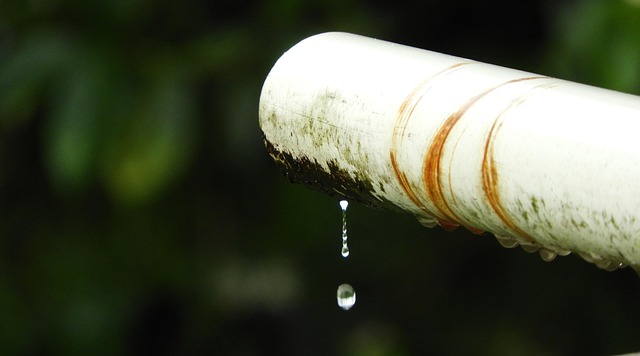Pipe leak detection is a critical process using advanced technologies like moisture meters, thermal imaging, and audio devices to identify even minute leaks, saving costs and preventing structural damage. Modern methods, including non-destructive testing and remote inspection systems, have revolutionized leak detection, making it more efficient, proactive, and less disruptive. Early detection offers numerous benefits such as preventing mold growth, water waste, and costly repairs. Regular leak detection and maintenance are essential for maximizing plumbing system performance and lifespan, minimizing financial impacts from pipeline failures caused by corrosion, physical damage, or material fatigue.
“Uncovering hidden dangers beneath your feet: Exploring Pipe Leak Detection. In today’s world, efficient leak detection systems are indispensable for maintaining infrastructure integrity. This comprehensive guide delves into the essentials of pipe leak detection, from traditional methods to modern technologies. We dissect the benefits of early identification, unravel common causes of pipeline failures, and highlight best practices for preventative maintenance. Stay ahead of the curve with this essential knowledge in the realm of leak detection.”
Understanding Pipe Leak Detection: The Basics

Pipe leak detection is a critical process aimed at identifying and mitigating water leaks within plumbing systems. It involves utilizing various techniques and technologies to pinpoint the exact location and extent of leaks, enabling prompt repair. Understanding the basics of leak detection is essential for both homeowners and professionals in the plumbing industry.
The process begins with analyzing patterns of water usage and potential signs of leakage, such as unusual noises or dampness. Advanced tools like moisture meters, thermal imaging cameras, and audio detection devices are then employed to scan pipes for any anomalies. These instruments can detect even the smallest leaks, helping to avoid further damage and unnecessary water waste. By quickly identifying and addressing leaks, property owners can save on repair costs and protect their homes from potential structural harm caused by water intrusion.
Traditional Methods of Identifying Leaks

In the traditional realm of leak detection, professionals often relied on time-consuming and sometimes invasive methods to identify pipe leaks. This involved a combination of visual inspections, listening for unusual noises, and utilizing scent as a biomarker—the smell of gas or other chemical substances could indicate a breach in the pipeline. Trained dogs were even employed to detect these odors with remarkable accuracy. However, these methods were often reactive, requiring leaks to be already present and potentially causing disruptions before they were discovered.
Additionally, traditional techniques might include shutting down parts of the system for manual testing, which could disrupt service and cause temporary inconveniences. With advancements in technology, especially in the digital era, leak detection has evolved significantly. Modern tools such as smart sensors, advanced analytics, and remote monitoring systems have revolutionized the way leaks are identified and addressed, offering more efficient, proactive, and less disruptive solutions for maintaining robust piping infrastructure.
Modern Technologies in Pipe Inspection and Repair

Modern technologies have significantly enhanced pipe inspection and repair processes, revolutionizing the way leak detection is conducted. Non-destructive testing (NDT) methods such as ultrasonics, electromagnetic induction, and thermal imaging are now employed to identify leaks and structural weaknesses in pipes without causing damage or disruptions. These advanced tools can detect even the smallest cracks or anomalies, ensuring that repairs are targeted and efficient.
Additionally, remote inspection systems equipped with high-definition cameras enable technicians to visually inspect pipes located in hard-to-reach areas, such as buried or confined spaces. This technology, coupled with real-time data analytics, allows for early detection of potential leak points, preventing costly damage and minimizing environmental impact. Automated leak detection systems that use smart sensors and AI algorithms are also emerging, promising even greater precision and proactive maintenance in the future.
Benefits of Early Leak Detection

Early leak detection offers numerous advantages for homeowners and businesses alike. By identifying potential water leaks at their source, individuals can avoid costly repairs and significant water waste. A small, undetected leak can turn into a major problem over time, leading to damage in walls, ceilings, and even structural components of buildings.
Moreover, prompt leak detection enables the prevention of mold growth and other health hazards often associated with hidden leaks. It also facilitates more effective water conservation, as quick action can stop unnecessary water loss. In today’s digital era, advanced technologies make early leak detection easier than ever, ensuring peace of mind for property owners.
Common Causes of Pipeline Failures

Pipeline failures can be attributed to a variety of factors, often leading to costly leak detection and repair operations. Corrosion is one of the most prevalent causes, particularly in older pipelines made from materials like iron and steel that are susceptible to rusting when exposed to moisture, soil acids, or air contaminants. Over time, this corrosion weakens the pipe’s structure, creating weaknesses that can eventually lead to leaks.
Another significant cause is physical damage, which can occur due to environmental factors such as extreme temperature fluctuations, heavy machinery operating nearby, or accidental excavation. These external forces can stress the pipeline, leading to cracks, bursts, or holes. In addition, manufacturing defects, poor installation practices, and material fatigue contribute to pipeline failures, emphasizing the importance of robust leak detection systems to identify and address these issues promptly.
Best Practices for Preventative Maintenance

Regular leak detection and preventative maintenance are key practices for ensuring optimal plumbing system performance and longevity. One of the best ways to prevent leaks is through proactive inspection and testing. Property owners and managers should schedule routine checks, especially in areas prone to leaks like joints, valves, and pipes under high pressure. These inspections can uncover potential issues early on, allowing for quick repairs before minor problems turn into major leaks.
Implementing a comprehensive maintenance plan involves keeping detailed records of all plumbing work, including installation dates, repair histories, and any observed abnormalities. Staying organized enables you to track patterns and identify recurring problems, addressing them systematically. Additionally, using high-quality materials during installation and regularly maintaining fixtures and appliances can significantly reduce leak risks.
